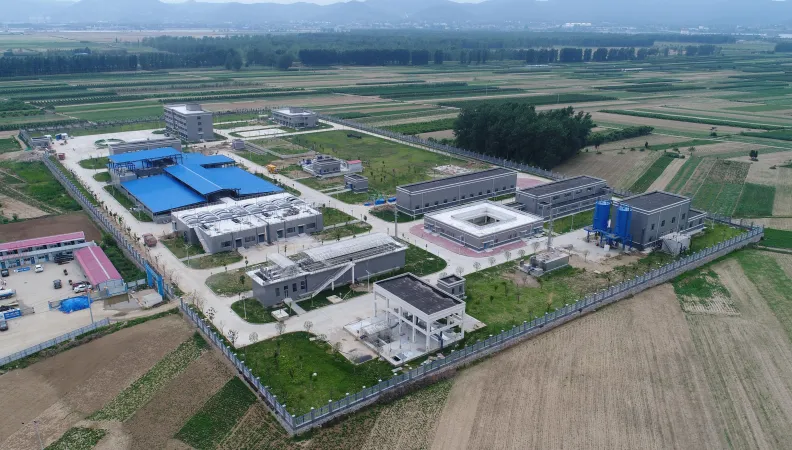Share the page
Environmentally friendly wastewater treatment in Xiangyang
Project


-
Project start date
-
Status
Ongoing
-
Project duration
-
20 years
-
AFD financing amount
-
33 600 000 €
-
Country and region
-
Location
-
Xiangyang, Hubei
-
Type of financing
-
Beneficiaries
-
Xiangyang Urban Sewage Treatment Company
The city of Xiangyang is experiencing strong population and economic growth which requires substantial short-term investments. The project to construct a wastewater treatment plant in the new Dongjin district focuses on protecting water resources and respecting the environment.
Context
Xiangyang, which is crossed by the Han River, is the second most populous city in Hubei province, with 1.2 million inhabitants. The city expects strong growth, which will mainly occur in the new Dongjin district that is currently being built. The existing sanitation system is operating at its full capacity. Consequently, it appeared essential to build a new wastewater treatment plant.
The project aims to provide the new Dongjin district with a wastewater collection, pumping and treatment system equipped with the best technologies. The goal is to pursue exemplary urban development and increased protection of water resources.
Description
The new plant was commissioned in late 2019. With a capacity of 100,000 m3 per day, it was designed to meet the area’s current needs. It treats all wastewater, primarily from households in the new Dongjin district, as well as effluent from the Shenzhen industrial park north of the city.
The treated water is discharged into the Han River downstream from the city. Since the river is an essential resource for the water supply of riparian populations, the plant was designed to meet the highest standards for treated water quality.
The sludge produced will be recovered via additional treatment (digestion and composting) at a plant recently commissioned for this purpose.
Impacts
-
The project will help develop the sanitation system to meet the needs of a city experiencing strong population and economic growth.
-
The processes implemented will enable advanced effluent treatment, which ensures the project has a minimum impact on the receiving environment.
-
By 2060, the water treatment station should have a daily capacity of 660,000 m3 and treat wastewater from nearly two million residents.


